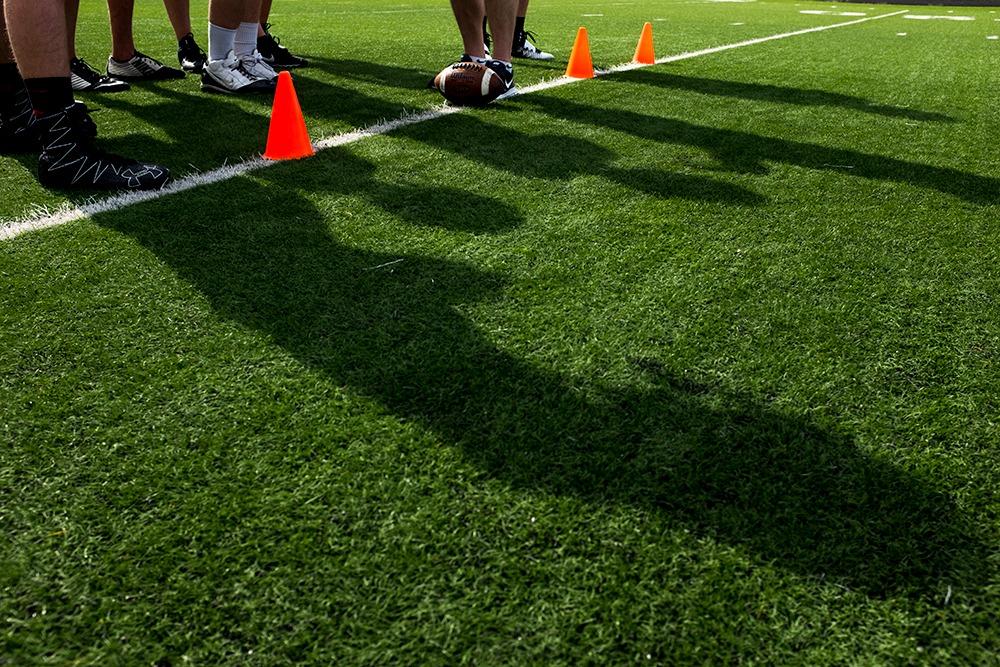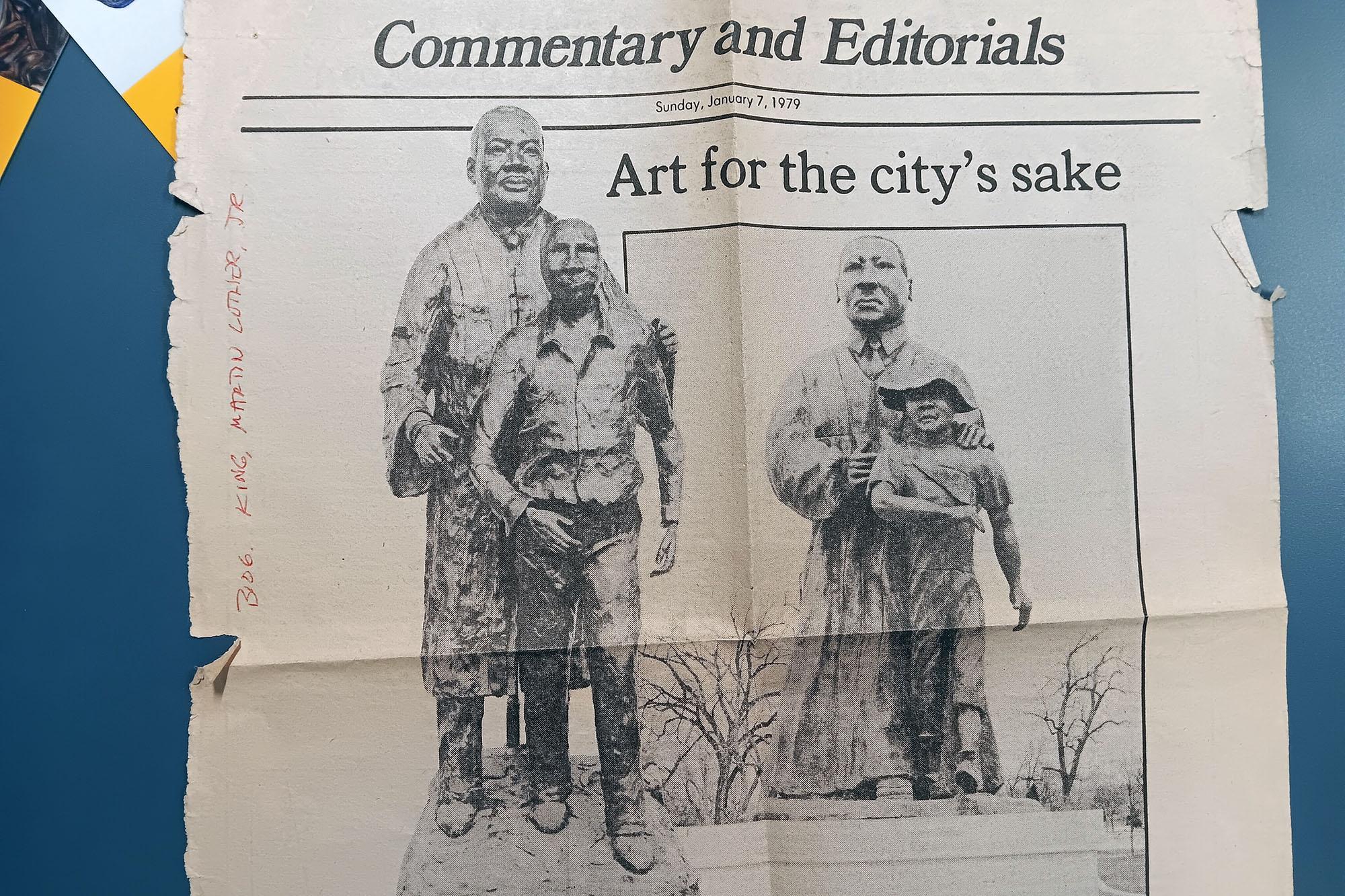
There’s common knowledge about Rev. Dr. Martin Luther King Jr., and then there’s what can be found at the Denver Public Library’s Central Library branch.
Among the findings are newspaper clippings, including one with a picture of a statue of the slain civil rights leader, made in the 1970’s. It was meant to be a permanent fixture in City Park, but was replaced 25 years later. There’s a program dating back to the mid-1980’s from an event that honored King, and a mention in a paperback book of a 1964 moment that may have never made the history books.
That library branch, near 13th Ave. and Broadway and currently under construction, is where yellowing clippings from newspaper articles can be found on almost any topic, according to special collections librarian Alex Hernandez.
“We maintain a collection of clipping files… they’re taken out of the newspapers daily,” said Hernandez. “People have been doing that for a century at least. We have everything from famous Coloradans, buildings, witchcraft, anything you can think of.”
On a recent cold afternoon, he asked library assistant Richard von Foerster to pull archived articles about King — at the request of a reporter looking to write a story that connected the leader to Denver.
Still folded neatly in thirds was a 1986 program for the inaugural celebration of Dr. Martin Luther King, Jr. Day. On the agenda was a song by the choir from the Iliff School of Theology in Denver. There was also a January 1991 Rocky Mountain News article listing events honoring King that month — including a community celebration in the Boulder High School auditorium and a reception at the library named after him, the Martin Luther King Jr. Branch Library on Colfax Avenue in Aurora.
There were at least a dozen articles from various newspapers on one specific topic: the statue of King in Denver’s City Park.
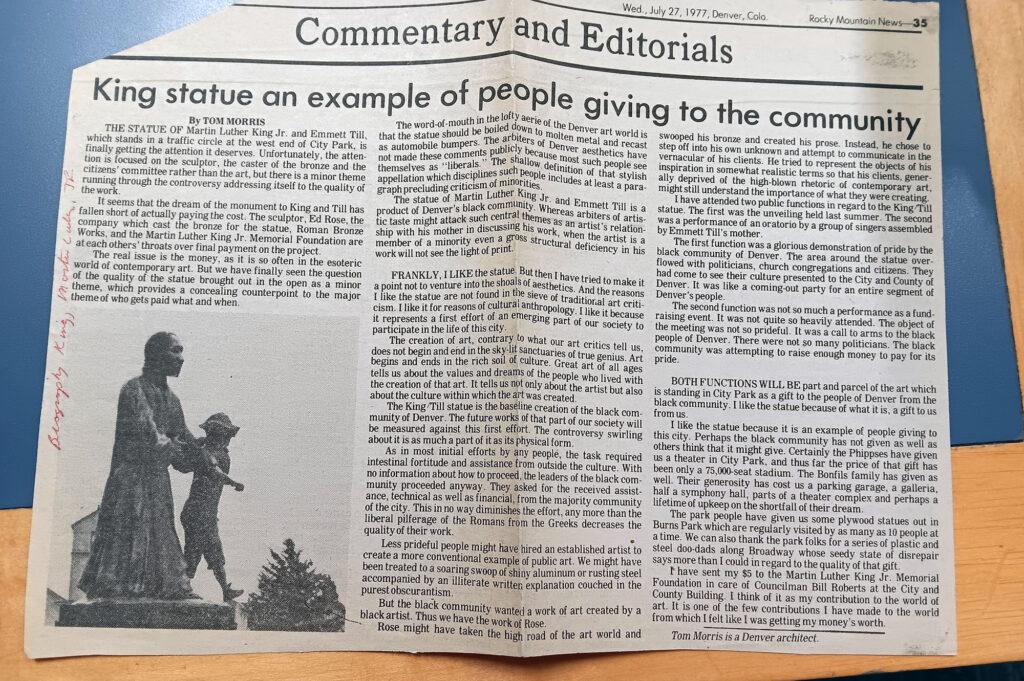
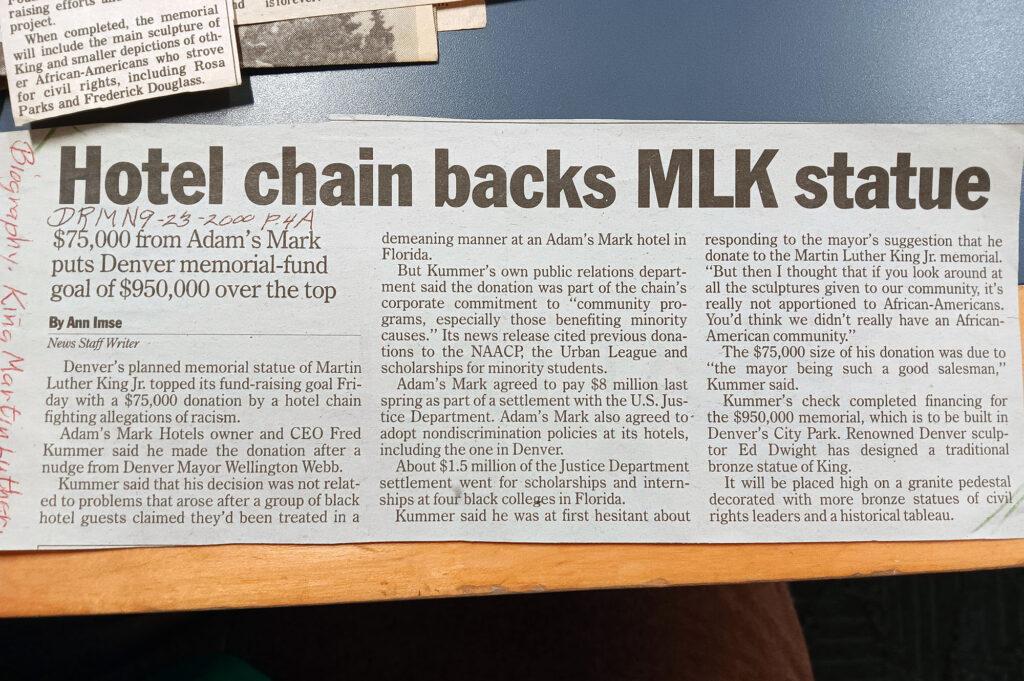
“There ended up being a great deal of controversy around the statue,” said Hernandez. “It was supposed to be of Martin Luther King walking with Emmett Till.”
But the issue was that “Martin Luther King's head is particularly large; [it] doesn't necessarily look like him. Emmett Till looks extra playful and happy. It was just kind of an odd statue,” Hernandez explained of the piece, apparently completed circa 1976.
“There ended up being a fundraiser to get more money to hire another sculptor to do the new sculpture, which we see in the park today," he added.
The clipping folder included articles with pictures of the earlier version of the statue, in which King’s head looks extra large in proportion to the rest of his body. The later version was reportedly completed in 2002.
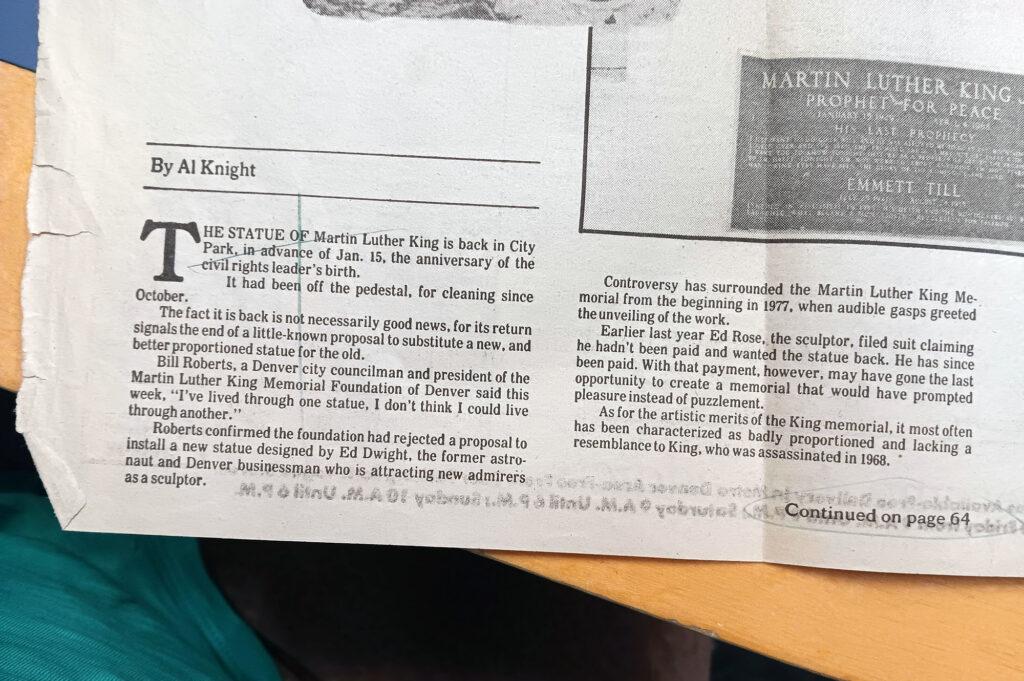
At the Central Library, von Foerster brought not only the folders, but also a thick paperback book called Park Hill Promise, by local historian Phil H. Goodstein. Its pages contained a tidbit about what happened before a speech King gave at a church in the Park Hill community of Denver in the mid-1960’s.
According to the 2012 book, which doesn’t offer a reference for the detail, he encountered — and overcame — a surprising obstacle just before the speech began:
" Park Hill Promise" by Phil H. GoodsteinFrom the beginning, Montview Presbyterian was a central cog . . . On two occasions, it hosted sermons by Martin Luther King. Among them was a visit sponsored by the Denver Area Council of Churches. On the afternoon of Sunday, January 26th, 1964, the congregation counted 3,250 people crammed into all parts of the complex in addition to 750 people who waited outside in the snow. As the time for King's talk approached, his hosts were worried the civil rights leader had seemingly disappeared, rushing into the sanctuary. At the last minute, he explained he had found himself locked in the restroom and had to crawl out of the window to return to the hall.
King was assassinated four years after the restroom incident, and would have been 95 years old this year.

